Environmental impact of paper consumption
- missionsustainability
- May 1, 2022
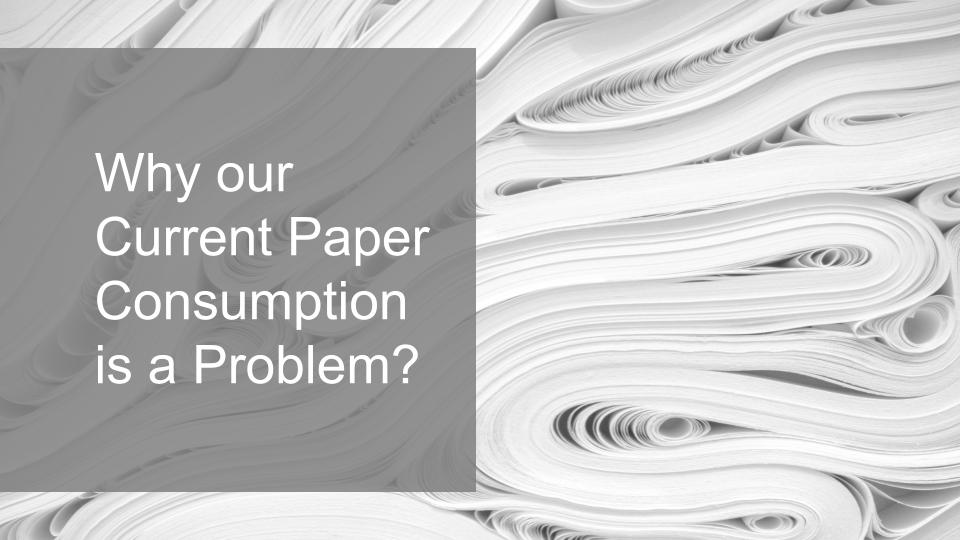
I still remember the countless paper planes I heedlessly made when I was a kid. My thick course textbooks failed to tell me the hefty price tag of negative environmental consequences that came with making those planes and the unfilled pages of my notebook that I never got to use haunt me now. So, this year, as part of my resolution of being more sustainable, I decided to cut down the amount of paper I use. You may wonder how our paper consumption affects the environment? Let’s find out…`
A brief history of paper
The story of paper starts from China, where the production involved the use of materials like rags, hemp, grasses, and stone mortars. This was a very sustainable method that made the paper consumption innocuous and hence was followed for years. But since the industrial revolution and our lavish lifestyles thereafter, various types of paper have been introduced that cannot be recycled. Any wax, plastic or foil-coated paper renders them non-recyclable.
Excessive consumption of paper
Paper continues to play a vital part in the digital era, with this ubiquitous substance being utilized for a variety of reasons on a daily basis all over the world. In fact, the annual global production of paper and cardboard exceeds 400 million metric tons. Packaging paper and board are the most commonly produced types of paper, with demand increasing in recent years due to the boom in the online shopping industry.
In the past 40 years, global paper consumption has surged by 400%
What’s that supposed to do with the environment, you say? Well, Paper production not only results in extensive deforestation, but it also consumes a significant amount of energy and water, as well as contributes to air pollution and waste concerns.
Discover products and services in sustainability
Get on step closer to making eco-friendly choices
Current paper manufacturing process
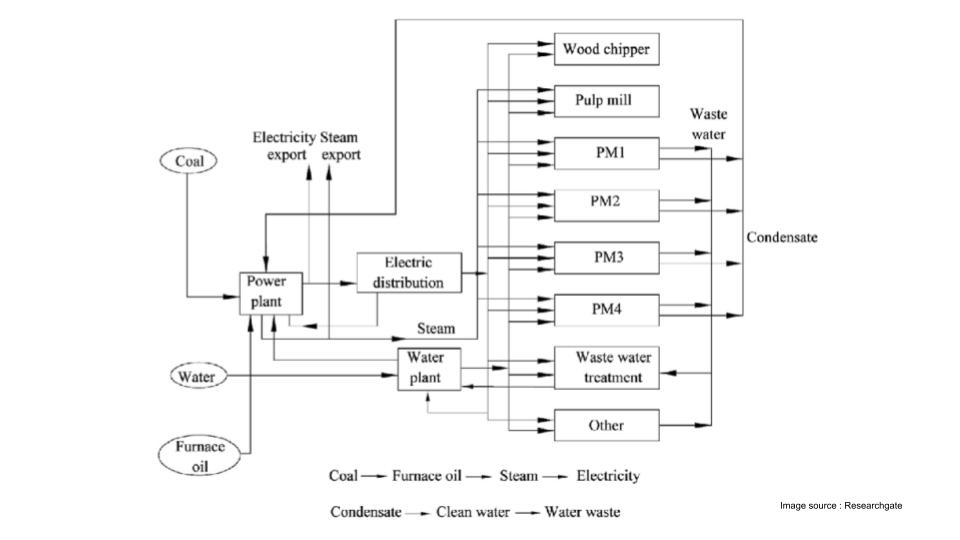
But where do the resources to fuel this mass consumption come from? Who pays for it? That’s right! Our forests…
Globally, 386 million hectares of forest were lost between 2001 and 2019. Since 2000, the amount of tree cover has decreased by nearly 10%. Every year, an estimated 18 million acres of forest are cleared. In more visual terms, that’s the equivalent of about 20 football fields every minute.
Approximately 40% of the world’s industrial logging is used to make paper (equivalent to 8 of those football fields every minute), with that percentage predicted to rise to 50% in the near future. But why is this specifically harmful to the environment?
Trees absorb carbon dioxide from the atmosphere (which is a major contributor to climate change) and release oxygen. Forest loss accounts for 12 to 17 percent of yearly worldwide greenhouse gas emissions, making it a significant contributor to one of the most important environmental issues of our day. Climate Change.
The global use of pulp and paper is predicted to double between 2010 and 2060. Increased paper production will not only increase waste in the landfills but also put even more strain on the world’s forests, which are already in a critical state – and only growing worse.
What's at stake with our paper waste?
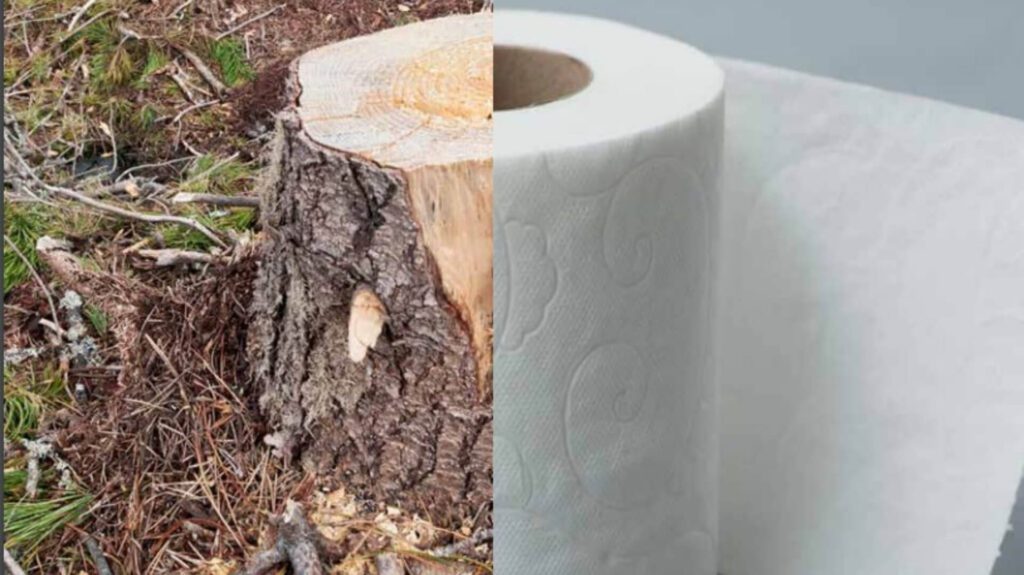
The pulp and paper industry does not only harm the trees but is also a huge menace to our water bodies. Did you know that the paper industry uses more water to produce a ton of the product than any other industry? The manufacturing of paper requires a large amount of water.
A single A4 sheet of paper uses 10 liters of water to make. In Western countries, the pulp and paper sector is the single largest industrial consumer of water.
To convert raw wood and other types of vegetable material into usable fiber, the pulp and paper industry employs a variety of techniques. These methods are meant to separate the cellulose component from the rest of the raw material, which could account for up to 50% of the total.
This industry consumes around 905.8 million m3 of water and discharges around 695 million m3 of wastewater in India annually, which eventually ends up polluting our water bodies and oceans.
While landfills are necessary for preventing contamination of our waste products and the environment, they are not designed to sustainably dispose of our garbage and are only a temporary solution. Plastic, a major menace to our earth accounts for 13.5% of landfill waste. However, paper is the leading contributor to landfills, accounting for a ridiculous 25% of all waste!
A case on paper receipts
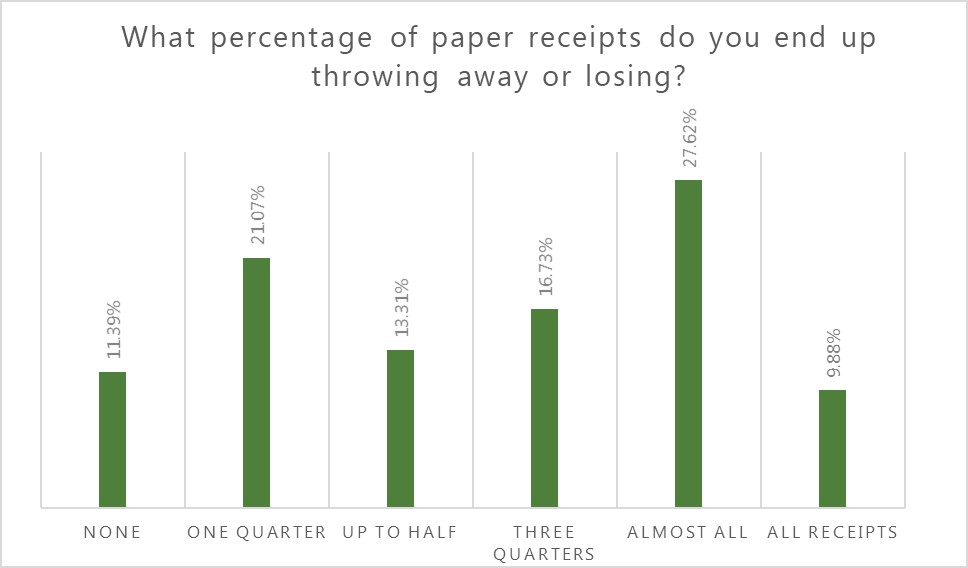
The last time you were handed in your receipt at the petrol pump or at your favorite café you probably took it without giving it a second thought. The slightly shiny and smooth paper receipt that you get are thermal papers. It allows printing via heat instead of ink. But this paper poses a lot of health and environmental concerns because it relies on a chemical Bisphenol A (BPA).
Because of its tendency to interfere with our bodies’ hormones, high levels of BPA can cause serious hormonal and neurological changes. There is also evidence that BPA can trigger breast cancer cells. Many firms have removed BPA from their plastics as a result of research indicating that it can harm women’s fertility and represent a risk to young children. Problematic chemical Bisphenol A (BPA) infiltrate our bloodstream anytime we handle thermal paper receipts. Retail employees, in fact, have 30 percent more BPA in their systems than other people.
Bisphenol A (BPA) can be absorbed immediately by the skin when grasped or transmitted from fingers to the mouth via food. Bisphenol-A “transfers from receipts to skin and can permeate the skin to such a depth that it cannot be rinsed off,” according to the Environmental Working Group.
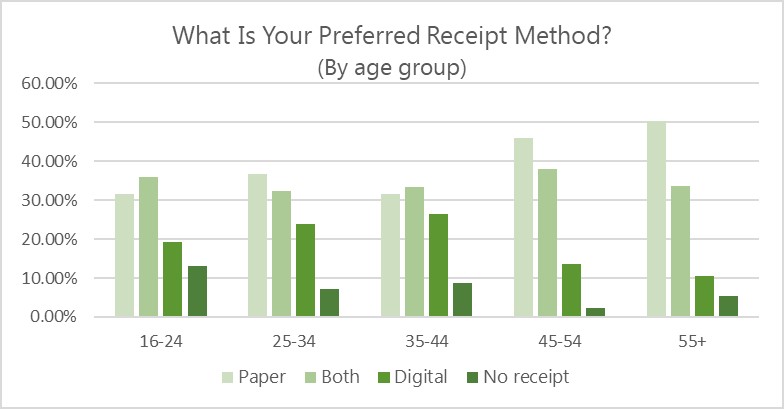
Aside from the health implications, the environmental consequences of receipt manufacture are also a source of worry. Since the papers are laced with BPA, they cannot be recycled. If recycled, the thermal papers would contaminate the recycled-paper production.
So, consider going digital and opting for an ‘e-receipt’ mailed to you, the next time you go to the market.
But, hey! Every change starts with us. What can we do to reduce our negative impact?
What can we do about paper waste?
Before throwing the day-old newspaper in the trash, try to remember the number of trees, energy, and water you can save if you just recycle those papers instead.
17 trees, 1,440 liters of oil, 2.3 cubic meters of landfill space, 4,000 kilowatts of electricity, and 26,500 gallons of water can be saved per tonne of recycled paper.
Despite the fact that paper is very easy to recycle, 55 percent of the world’s paper supply originates from newly cut trees.
Recycling paper has various advantages for both individuals and the environment. If recycled papers are used to manufacture new paper, then it will minimize the number of trees cut down and conserve natural resources. Also, Recycling services are sometimes less expensive than trash removal services.
Paper recycling preserves landfill space and minimizes the quantity of pollution released into the atmosphere as a result of incineration.
There are numerous green organizations that help you recycle paper. One of them is Green-O-Tech India, Winner of the “Best Environmental Excellence Award 2020” awarded by the Ministry of MSME (Govt of India).
Green-O-Tech India collects waste paper from its clients and recycles it. After that, they make daily-use stationery products out of recycled paper, such as Note Pads, Conference Pads, Wiro Note Books, Dairies, Copier Paper, Paper Pens, Paper Pencils, and so on, which they supply free of charge. In addition, for every 100 kg of waste paper recycled, they plant a tree for the client (at no cost) as part of their “Green Initiative.”
Going digital with your documents is a simple option that has a significant impact. Not only does this reduce your environmental effect, but it also overcomes many of the constraints of paper documents. Document scanning reduces operating costs and saves time. Even the most basic tools, such as email and electronic filing, boost productivity while also helping the environment. These are tactics that can help you achieve a variety of objectives while saving you time and money. Switching from paper to digital is simple, quick, and effective!
This blog is originally written by Ishita Paul. She is a Economics students from IPCW, University of Delhi. and a long time contributor to the Mission Sustainability.



